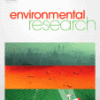Paper

Wearables and location tracking technologies for mental-state sensing in outdoor environments.
Together with Amit Birenboim et al. we did a study on wearables and location tracking technologies for mental-state sensing in outdoor environments. The paper is accepted in The Professional Geographer. Abstract: Advances in commercial wearable devices are increasingly facilitating the collection and analysis of everyday physiological data. This paper discusses the theoretical and practical aspects of…
Read more
Does residential green and blue space promote recovery in psychotic disorders?
In a recently published paper we addressed this question using a sample of patients who had been admitted to the psychiatric ward of an academic hospital in Utrecht, The Netherlands. The full paper is freely available.
Read more
Does green space decrease antidepressant prescriptions?
Exposure to green space seems to be beneficial for self-reported mental health. In this study we used an objective health indicator, namely antidepressant prescription rates. Current studies rely exclusively upon mean regression models assuming linear associations. It is, however, plausible that the presence of green space is non-linearly related with different quantiles of the outcome…
Read more
Green space reduces suicide risk
Natural outdoor environments, such as green spaces (ie, grass, forests, or parks), blue spaces (ie, visible bodies of fresh or salt water), and coastal proximity, have been increasingly shown to promote mental health. However, little is known about how and the extent to which these natural environments are associated with suicide mortality. Our aim was to…
Read more
Considerable space-time suicide risk across Germany
A paper on space-time suicide risk using Bayesian modeling has been published in Scientific Reports. Despite comprehensive prevention programs in Germany, suicide has been on the rise again since 2007. The underlying reasons and spatiotemporal risk patterns are poorly understood. We assessed the spatiotemporal risk of suicide per district attributable to multiple risk and protective…
Read more
Toward dynamic urban environmental exposure assessments
The theoretical basis for the NEEDS project has been published in Environmental Research. It is increasingly recognized that mental disorders are affected by both personal characteristics and environmental exposures. The built, natural, and social environments can either contribute to or buffer against metal disorders. Environmental exposure assessments related to mental health typically rely on neighborhoods…
Read more
Do different conceptualizations of urbanity matter when we investigate urban-rural inequalities in suicide mortality?
Yes, it does, as our recent paper shows. Urban–rural disparities in suicide mortality have received considerable attention. Varying conceptualizations of urbanity may contribute to the conflicting findings. This ecological study on Germany assessed how and to what extent urban–rural suicide associations are affected by 14 different urban–rural indicators. Indicators were based on continuous or k-means…
Read more
